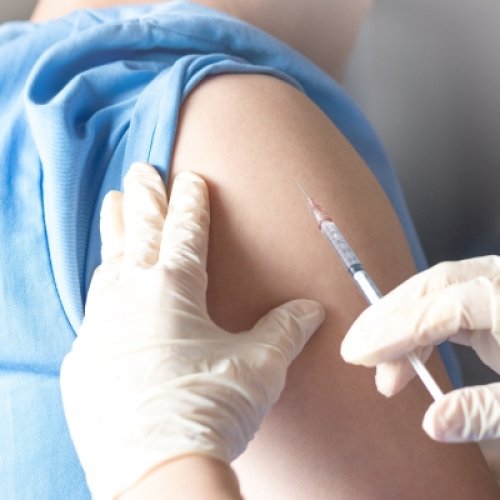SELLING OFFER
Seek co-innovation with global enterprises and governmental institutions
Manufacturing technology for “9-valent human papillomavirus (HPV) vaccine” based on virus-like particles (VLPs)
179 2023. 6. 15.
Summary
The Korean bio-venture can provide the technology to manufacture the 9-valent human papillomavirus (HPV) vaccine using virus-like particles (VLPs). The technology consists of up-stream cell culture and down-stream purification, which features effectively expressing VLP on yeast (Saccharomyces cerevisiae), and purifying VLP antigens. The company seeks some licensee and/or CMO partners in the pharmaceutical sector that have vaccine production plants or sell vaccines.
Advantages and Innovations
The product will be the next generation vaccine that can replace the expensive Gardasil®9. They have world-wide patent rights in 12 countries and there is no FTO issue.
The 9-valent HPV vaccine has been developed as a cost-competitive and patented VLP manufacturing method, and commercialization is possible as soon as clinical trials will be finished shortly.
The key technology and patent rights consists of up-stream cell culture and down-stream purification technology. Up-stream technology is for effectively expressing VLP on yeast (Saccharomyces cerevisiae), and down-stream technology is that can purify VLP antigens with high purity and high efficiency than other competitor’s technology.
It has patented technology to manufacturing VLP through yeast expression system, which is advantages for scale-up and GMP production.
Their technology offers a clear solution to overcome the VLP technology barrier.
Stage of Development
Description
The global HPV vaccine market is now in the 4.2 billion$ in 2022 thanks to Gardasil®9. The HPV market is expected to grow by 12.4% annually to 10.8 billion$ by 2030, as the cancer prevention demand increases. Characteristically, the global HPV vaccine market is monopolized by MSD’s Gardasil series. Gardasil®9 is the most advanced form of vaccine among these vaccines. The common point of these vaccines is that they are virus-like particles (VLPs) based vaccines. The HPV vaccine is the most successful case of “VLP-based vaccine”.
The bi-valent and quadria-valent HPV vaccines have a 74% preventive effect based on cervical cancer. For the 9-valent HPV vaccine, the prevention range for cervical cancer has expanded to 92%. HPV is a cause of various cancer such as cervical cancer, vulvar, vaginal, and anal cancer, so the market unmet needs for 9-valent HPV vaccine efficacy is very high.
VLP is very attracting attention as a vaccine antigen for the following reasons. First, VLP is a reconstruction of the virus form through gene recombination technology, which has a structure that is almost the same as the native virus. Therefore, it provides excellent quality protective immunity.
Secondly, it can provide excellent immunogenicity. Conventional split antigens have many limitations in effectively including immune response. On the other hand, VLP induces clustering of immune cell receptors and can induce a strong immune response. Despite these unique advantages, VLP manufacturing has a very high technical barrier due to its technical difficulty. This technical feature is advantageous for early developers to maintain monopoly.
The key patent portfolios consist of up-stream cell culture and down-stream purification technology. Up-stream technology is for effectively expressing VLP, and down-stream technology is that can purify VLP antigens with high purity and high efficiency. VLP has a very complex structure, so it is at the core technology to maintain this structure correctly and not miss production efficiency.
In case of IND (Investigational New Drug) filing, their 9-valent HPV vaccine has secured safety data through general toxicity, safety pharmacology and reproductive toxicity in non-clinical toxicity studies and secured full CTD (Common Technical Document) data. Up to date, Phase I clinical trial is underway in 40 healthy women aged 19 to 45 years in Korea.
The picture below is an electron microscopy result of native HPV virion and that of HPV VLP antigen manufactured by the company. HPV VLP antigen has a similar shape to the extent that it is indistinguishable from the native HPV virion. The structural similarity of these HPV VLPs provides high quality immune response.
In conclusion, the 9-valent HPV vaccine will be possiblibly the next generation vaccine to replace the high-cost Gardasil®9.
The Korea company has patent rights worldwide and has accumulated technology know-how over a long period of time in addition to patented technology. These patent technologies can provide a competitive advantage. The technology provides a clear solution to overcome the barriers to VLP manufacturing technology.
Technology Keywords
Market Application Keywords
Sector Group
Type and Size of Client
Type and Role of Partner Sought
The company wants to out-license the 9-valent HPV vaccine manufacturing technology and patent rights. Through partnership, the partner company will complete Phase 2 and Phase 3 clinical trials in Europe. After approval in Europe, the partner will sell the 9-valent HPV vaccine and provide milestone fees for technology transfer.
- Type of partner sought
Companies, public institutions, private institutions which deals with power supplies.
: Pharmaceutical or Vaccine Manufacturing Company
- Specific area of activity of the partner:
: A company that manufactures vaccines or conducts vaccine sales business
Type of Partnership Considered
Research cooperation agreement
Company
Internal Reference
Category
If interested, please press this button.
We will answer you soon.